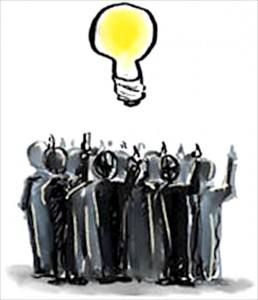{grow}. www.businessgrow.com
Cohen and Rosenzweig write that "its very name - the Internet - underscores how this advanced computer network exists to shuttle information between and among people."Think of all the possibilites this means for historians! Endless research at a click of the mouse! Instantaneous feedback on their ideas! As John Herbert and Karen Estlund write in their article "Creating Citizen Historians"some institutions have begun to unlock the potential of the internet as a tool for historians. The Utah Digital Newspapers program is the leading newspaper archive (as of 2008). Their goal is to provide access to researchers - or anybody really - who wants to view Utah's newspapers from the past. Herbert and Estlund tell us that the newspapers have been used in a wide variety of ways for research. For example, Roy Webb of the Marriott Library used the Utah Digital Newspapers to create a presentation on the history of soccer in Utah. They also say that the newspapers are a treasure trove for genealogists and amateur historians as well.
Since the internet provides a means of communication between viewer and creator, it can also reverse those roles, turning the viewer into the creator. Crowd sourcing is a keyword in this discussion because it means that people who create websites can actually mine content from their audience. The very popular site Flickr operates largely on crowd sourcing. People upload their own photos and then they and other users can tag, make notes and comment on the photos to build the metadata (i.e. content) and meaning to the photos. The Library of Congress has jumped aboard the crowd sourcing concept by opening its very own Flickr account. The great thing about the Library of Congress' Flickr is, as the Spellbound Blog puts it: "More eyes will see the treasures that once were only available to those who could get inside temperature and humidity controlled vaults."
But, there's a huge drawback to the LOC Flickr account. Namely, as Larry Cebula likes to point out "the notes are mostly smart-ass remarks, the comments are empty, the tags are idiosyncratic." In fact, this highlights one of the largest drawbacks of crowd sourcing. How do we filter through all the muck? Cohen and Rosenzweig wisely suggest that such crowd-sourced-content be reviewed by professionals in their "Qualitative Concerns" subheading. I would have to agree with this, after all just because historians want to sit back and let their audience create the meat-and-potatoes of their website, doesn't mean that the historian should become lazy. Certain amounts of skeptical review must be applied to incoming information. In the case of the LOC Flickr account I would suggest a "lock" where comments, tags, etc. must first be reviewed for quality before being viewable to the general public.
What I found more useful than the LOC Flickr account was the myLOC.gov site. This site basically makes the Library of Congress much more personal by allowing you to create your own collection. The collection is a portfolio you put together by adding your favorite Library of Congress documents. And if you like myLOC you should definitely check out Omeka! Like the myLOC site, Omeka allows you to create collections, instead you get to create a collection website. The basic version is free and the possibilities are endless. The internet is a gold-mine of opportunities for historians and wisely using tools like Flickr, myLOC and Omeka will certainly make history more accessible to anyone who is curious about history.



